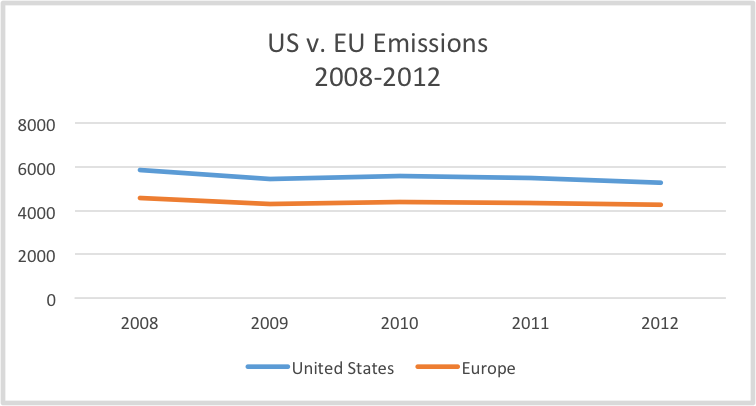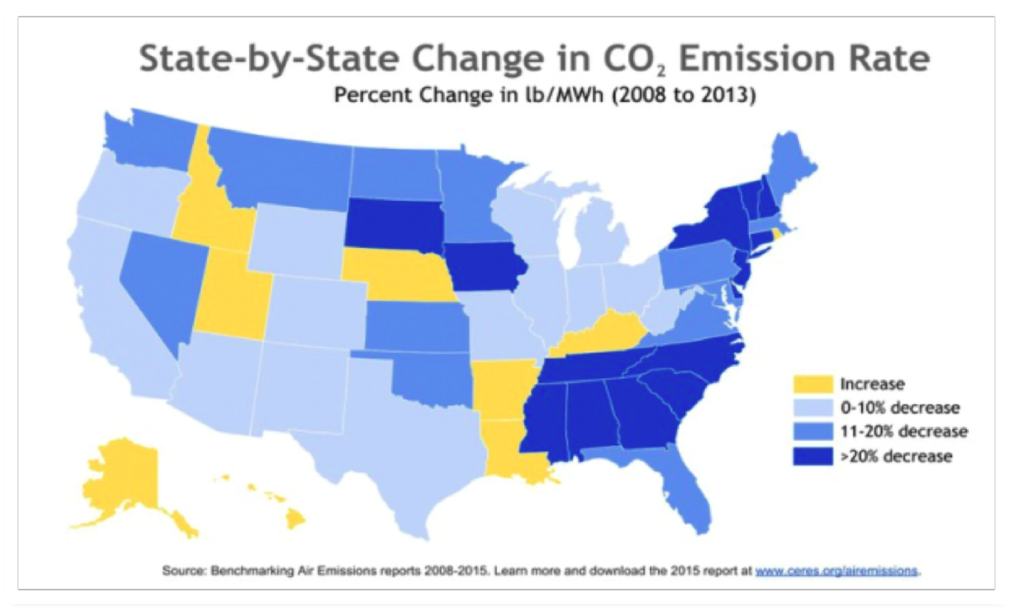The Legislature is back in session after a summer hiatus. They’ve come back to some daunting challenges, many of those of their own making. One of those challenges is what to do about California’s (in)famous Global Warming Solutions Act, otherwise known as AB32.
One key piece is SB32 which, among other things seeks to extend a program which otherwise would expire. Gov. Jerry Brown, who is trying to reach an agreement with lawmakers by the end of August to extend the program beyond 2020, said that he will “get it one way or the other.”
Much of the debate is about the current law’s cap and trade program, seen by many as the best option, but seen by others as a simple and illegal tax. Other types of reduction schemes are debated…from direct control regulations to a so called carbon tax. What seems to be missing from the debates is the one solution that data shows are the most effective. Using the power of free markets has shown better results that intrusive one size fits all government intervention. The legislature should broaden their discussion to include non-government approaches if they are truly interested in reducing carbon emissions and believe something must be done.
U.S. energy-related carbon dioxide emissions (CO2) have declined in seven of the past eleven years and in 2015 were 12% below the total for 2005. Total emissions from the electric power sector in 2013 totaled 2,053 million metric tons (Mmt), about 15% below its 2005 level. Similarly, the carbon (equivalent) intensity of the U.S. has declined between 2000 and 2013. While the U.S.’s total emissions rank high because of the size of the economy, its intensity (tons per dollar of GDP) ranks better than most other countries, especially some of the large industrializing developed countries, such as China. Imposing a domestic carbon tax might actually result in an increase in global emissions, as businesses—especially in manufacturing, but perhaps even agriculture—choose to move production to other countries where emissions intensities are much worse but energy prices more reasonable (in part due to the absence of carbon taxes or other mandates).
From 2008 through 2012, U.S. emissions dropped ten percentage points, while Europe dropped seven, despite no national carbon control (other than the relatively free market) regulation being in place in the U.S., and a near European-wide emission trading scheme there. The same better performance is illustrated on a state by state basis as shown in the second figure, looking at electric power sector in the various states. It is stunning the difference in emission reductions between states like California with the most stringent and interventionist laws on the books compared to, say, Georgia with a relatively freer market for electrical generation.

Source: EIA.gov

Source: Ceres.org
If California Legislators are truly concerned about the climate changing properties of carbon dioxide, perhaps they should include freeing the market and removing artificialities like renewable portfolio standard, cap and trade and other ineffective and ultimately harmful regulations. Or they can just let AB32 ride off into the sunset.

